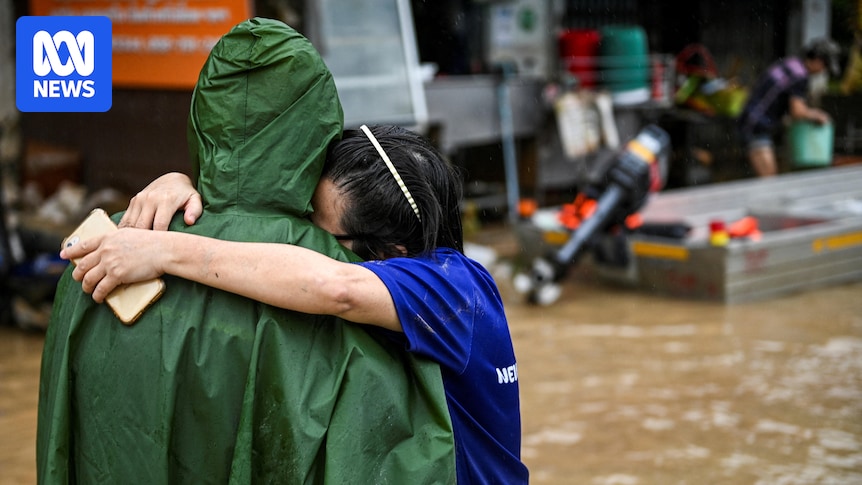
Floods have swept through Thailand, Malaysia, and Indonesia, leaving more than 50 people dead in some of the worst flooding to hit Southeast Asia in years. In Thailand, the death toll has climbed to 33, while in Indonesia at least 23 people were killed and more than 20 were missing, according to officials. At least one person has died in Malaysia.
“There have been 33 deaths across seven provinces,” Thai government spokesperson Siripong Angkasakulkiat said in Bangkok. Three days of torrential rain that started last week dumped record volumes on Hat Yai, Thailand’s southern commercial hub, flooding hospitals and stranding thousands on rooftops. The city received 335 mm of rain last Friday — its highest in a single day for 300 years.
Thailand: A Nation Struggles Amidst Disaster
The Thai military has mobilized about 200 boats, 20 helicopters, and its lone aircraft carrier to deliver critical supplies such as oxygen tanks and to evacuate the sick. Thai authorities said they had received appeals for help from around 77,000 people via social media. Floods have affected more than 980,000 homes and over 2.7 million people in Thailand, the interior ministry reported.
The weather system had moved towards the Strait of Malacca and intensified into a tropical cyclone moving towards Indonesia, the Thai Meteorological Department stated. This development follows a series of natural disasters that have increasingly plagued the region, exacerbated by climate change and urbanization.
Indonesia: Landslides and Flash Floods Wreak Havoc
Rescuers in Indonesia recovered more bodies in the search for dozens of people buried under landslides or swept away after torrential rains unleashed flash floods and triggered landslides on Sumatra island. The death toll had increased to 23, and more than two dozen people remained missing, officials said on Wednesday.
Rescue teams were struggling to reach affected areas in 11 cities and districts of North Sumatra province after the monsoon rains over the past week caused rivers to burst their banks, tearing through hilly villages as mud, rocks, and trees tumbled down, leaving destruction in their wake.
“Bad weather, power blackouts and mudslides hampered the rescue operation,” Sibolga police chief Eddy Inganta said, adding that access remained limited as rescuers battled harsh conditions.
Authorities urged residents in high-risk zones to evacuate immediately, warning that continued rainfall could trigger more landslides after six landslides in the hilly city flattened 17 houses and a cafe. Floods were also reported in many other provinces in the vast archipelago nation that is home to more than 280 million people, including in Aceh and West Sumatra, where hundreds of houses were flooded, many up to roofs, and main roads were blocked, the disaster agency said.
Malaysia: A Nation on Alert
Meanwhile, Malaysia has not been spared from the devastation. While the death toll remains lower compared to its neighbors, the threat of rising waters looms large. The Malaysian government has issued warnings and is monitoring the situation closely, preparing to take necessary action should conditions worsen.
Heavy seasonal rain from about October to March frequently causes flooding and landslides in Indonesia, an archipelago of 17,000 islands where millions of people live in mountainous areas or near fertile flood plains. This pattern of natural disasters is a stark reminder of the region’s vulnerability to extreme weather events.
Looking Ahead: Coping with Climate Challenges
The current situation underscores the urgent need for comprehensive disaster management strategies across Southeast Asia. Experts emphasize the importance of early warning systems, better urban planning, and international cooperation to mitigate the impact of such disasters.
According to climate scientist Dr. Arif Rahman, “The increasing frequency and intensity of these floods are a clear indicator of climate change impacts. Regional cooperation and sustainable development practices are crucial to building resilience against future disasters.”
As the affected countries grapple with the immediate aftermath, the focus will also be on rebuilding and preparing for the future. The international community’s support, both in terms of aid and expertise, will be vital in helping these nations recover and strengthen their defenses against natural calamities.







